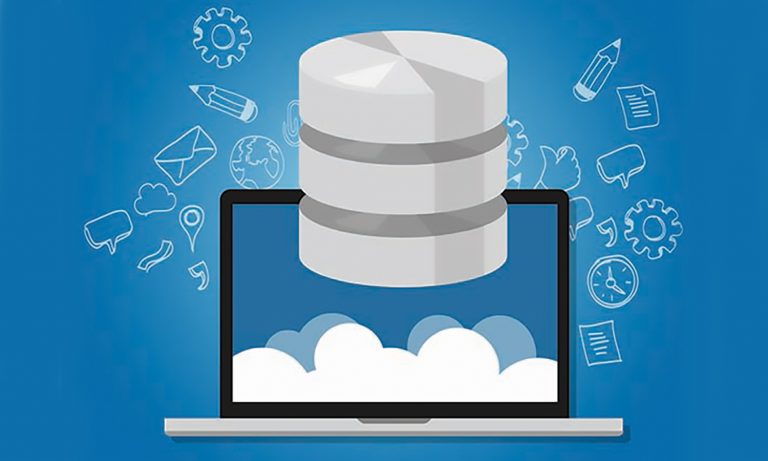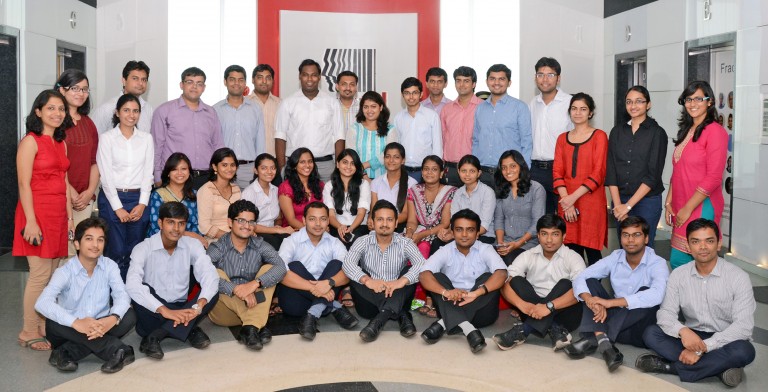 Analytics India Magazine: Could you give us a brief overview of your experience with enterprise and corporate performance management (EPM/CPM) and analytics?
Analytics India Magazine: Could you give us a brief overview of your experience with enterprise and corporate performance management (EPM/CPM) and analytics?
Gary Cokins: My 40-year career experience with EPM and analytics began after graduating with degrees in industrial engineering and operations research and with an MBA in finance and accounting. This quantitative foundation led to my first-line management job with a blue-chip conglomerate in both accounting and operations management. During my next 15 years in management consulting with Deloitte, KPMG, and EDS (now HP), I leveraged my skills in problem solving. During my last 15 years with SAS, a business intelligence and analytics software vendor that I retired from, I have devoted my time to educating and helping organizations successfully implement EPM/CPM methods imbedded with analytics. As I am a careful observer of my learning environment, I have been able to author six business books, with last three being on EPM/CPM and predictive analytics.
AIM: What is EPM/CPM? What is your perspective on the difference between business intelligence (BI) and analytics?
GK: There is general confusion about what EPM/CPM is, and it is often perceived far too narrowly as just better financial reporting with a bunch of measurement dashboards. It is much broader than that, however. Before I clarify what EPM/CPM is and the difference between EPM/CPM and BI, I should point out that imbedding analytics of all flavors into EPM/CPM methods; such as correlation, regression, clustering, and segmentation analysis; enriches the EPM/CPM methods.
EPM/CPM itself is not a new method, which everyone now has to learn, but rather EPM/CPM tightly integrates business improvement and analytic methods, which executives and employee teams are already familiar with. Think of EPM/CPM as an umbrella concept. EPM/CPM integrates operational and financial information into a single decision support and planning framework. These methods include strategy maps with its associated balanced scorecard and dashboards, customer profitability analysis (using activity-based costing principles), forecasting, driver-based budgeting with rolling financial projections, enterprise risk management (ERM), and resource capacity requirements planning. These methods in turn fuel other core solutions, such as customer relationship management, supply chain management, and human capital management systems, as well as lean management and the Six Sigma process improvement initiatives. It is quite a stew, but they all blend together.
EPM/CPM puts BI into context. BI reporting consumes stored data that first must be cleansed and integrated from disparate source systems and then transformed into information. Analytics produces new information. EPM/CPM then leverages and deploys the information. EPM/CPM requires BI as a foundation. When analytics are added to BI and EPM/CPM, organizations gain insights and foresight for better and more timely decision making.
AIM: In your opinion, what are the basic considerations for deploying EPM/CPM approaches?
GK: As I just described, many organizations have already begun with basic levels of EPM/CPM. Their challenge now is to move up to higher stages of maturity that include integrating EPM/CPM’s methods and imbedding analytics into them. A key consideration to expanding an organization’s journey is to recognize that the barriers and obstacles are no longer technical ones, but rather social and cultural. These include human nature’s resistance to change, fear of being measured and held accountable, fear of others knowing the truth, and weak leadership. Hence, behavioral change management is a key to realizing value from EPM/CPM. A consideration for the executive team is to create a culture for metrics and analytics and to remove any fear that employees have of reprisals from what is discovered. EPM/CPM with BI is not just about monitoring the dials in a scorecard or dashboard, but rather moving the dials with integrated analytics-based methods to make better decisions.
AIM: We often think of EPM/CPM as something limited to large enterprises. Can smaller companies apply reliable EPM/CPM approaches? If so, how? And, what are the limitations and opportunities for smaller companies?
GK: It is a common misconception that EPM/CPM methods can only be applied by large companies that have the resources and budgets to implement them. As mentioned, most organizations, both large and small, are already applying methods to measure performance; calculate product, service-line, channel, and customer profitability; plan for the future; and understand their customers. Size is not the issue. The issue is how well and robustly they perform these tasks. For smaller companies, a limitation will always be making the time to apply EPM/CPM methods and having the resources to implement them. The opportunity for them is to realize that there is substantial return on investment (ROI) from improving the ways in which they gain understanding, insights, and foresight to make better decisions. BI and EPM/CPM are these ways. Applying analytics to BI and EPM/CPM no longer requires statistical experts with PhDs. Today, with analytics technology, casual users can frame and analyze problems.
What matters with any organization is the challenge in coping with complexity, uncertainty, and the rate of change. Almost all organizations see these three aspects to managing an organization as a growing concern – especially with globalization and an increasingly wired and interconnected world. Therefore, there is little difference in the application of EPM/CPM methods between small and large enterprises.
AIM: In your experience, what are the two major mistakes companies make when using analytics and/or BI
GK: Two major mistakes involve poor data quality and management and lack of preparation.
The first mistake is oversimplified with the phrase “garbage in, garbage out.” However, the quality and purity of the source data can either erode or improve the use of that data to convert it into information. Many BI deployments are delayed not by the technology, but by the poor state of the data that is uncovered during the implementation. Software tools like extraction, transform, and load (ETL) can solve this problem.
The second mistake involves not being prepared for adopting and implementing BI and analytics. This requires an executive leadership team that promotes learning and tolerates mistakes. Successful organizations often create competency centers where skilled employees teach and transfer knowledge to others.
AIM: As a seasoned speaker and author, what do you think are the most common problems people face and need to solve? In other words, what questions do people ask you at meetings and other similar events?
GK: A question I am frequently asked is “How do we get started?” There is often hesitation and postponement. Many organizations tend to over-plan and under-execute. My advice is to first realize there is no standard roadmap. What matters is arriving at the completion of the full vision of analytics-based EPM/CPM – EPM/CPM methods that are integrated with decision analysis and support.
Once the BI and EPM/CPM journey becomes accepted as a priority, apprehension can set in that the mountain is too high to climb. That is, there is a misconception that the systems will be enormous and take many years to implement. Getting started can be resolved by using a rapid prototyping with iterative remodeling approach. Start small but think big. Get early wins, gain lessons learned, and broaden the scope.
Initial prototype models are not intended for usable results, but rather for accelerated learning and getting buy-in. What is engaging is that the initial models are of one’s own organization. Not only can participants relate to the models, but they can also begin to mentally connect how the information, once further refined, can be used in their analysis and decisions. They can also begin to see how the EPM/CPM models can be integrated. No model needs to be perfect and precisely accurate. Is the extra higher climb worth the better view? Rarely. That is, will incremental efforts to gain more detail and accuracy exceed the extra administrative effort to collect, calculate, and report the information. With discipline, users can assess when the level of detail and complexity of their models is good enough – and then move on to using the information.
AIM: What do you think are the most important capabilities of BI/EPM/CPM software providers?
GK: Software vendors should try to differentiate themselves from other software vendors on three levels: (1) its application of integrated analytics; (2) its focus on business issues; and (3) its culture.
As the first differentiator, a vendor’s software code should continuously be optimized to extract data and convert it into information. This will allow them to be massively scalable with extremely fast computational power.
Second, regarding a focus on business issues, in recent years many software vendors have progressed from a statistics and BI tool vendor to a solutions vendor – with many solutions tailored for specific industries, such as retail, financial services, manufacturing, hospitality, utilities, or oil and gas companies. Public-sector governments and universities can also benefit from analytics and EPM/CPM methods. The solutions should be designed to address business issues, such as “which customers are most attractive to retain, grow, win back, and acquire—and which are not?”
Third, from a culture basis, a software vendor should embrace innovation. Its leadership team should foster experimentation and learning from mistakes.
AIM: In several of your blogs and articles, you have written about the “inequality of decision rights,” where you mention that analysts don’t have sufficient decision rights to act. Could you expand more on this and tell us what, in your opinion, are the issues that limit the rights of analysts to make decisions, and how an organization could work to address these issues?
GK: In my past blogs and articles, I have stated that an obstacle to organizational improvement and strategy execution is that employees have not been granted sufficient decision rights to act on the conclusions they have derived from fact-based explorations. Decision rights remain hoarded at the top of the organization. Empowering employees with decision rights and analytical tools with which to reach those decisions is the key to organizational improvement.
Studies have shown that the two major barriers to effective strategy execution are: (1) not distributing decision rights downward into the layers of the organization chart; and (2) poor cross-functional information flows. Contrary to common belief, removing these two barriers trumps reshaping the boxes and lines in the organization chart and incentive systems. There is an iron law of economics that the better the decisions, then the better the results – and hence continuous organizational improvement will follow, financial or otherwise.
There is another obstacle. The IT function often acts as a wall between the data and its users. Experienced analysts do not use BI to search for a diamond in a coal mine or to flog the data until it confesses with the truth. Instead, they first speculate that two or more things are related or that some underlying behavior is driving a pattern to be seen in various data. They apply BI and analytics as confirmation more than as a somewhat random exploration. This requires users to have easy and flexible access to data, the ability to manipulate the data, and the software to support their processes. But IT tends to exhibit gatekeeper behavior, proclaiming, “We own the data and if you want a report, we’ll write it for you.” Progressive organizations remove this wall and train users on how to more effectively apply BI and analytics.
AIM: Finally, what final comments might you have?
GK: In the past the best leaders had the best answers. But today the best leaders have the best questions! There is too much complexity and uncertainty for executives to rely on their past experiences that achieved their promotions to be executives. They should create the culture I earlier mentioned to embrace analytics, fact-based information, and EPM/CPM methods.
[divider divider_color=”#000000″ link_color=”#000000″ size=”1″]
[spoiler title=”Biography of Gary Cokins” style=”fancy” icon=”plus-circle”]Gary Cokins (Cornell University BS IE/OR, 1971; Northwestern University Kellogg MBA 1974) is an internationally recognized expert, speaker, and author in advanced cost management and enterprise performance and risk management (EPM/ERM) systems. He is the founder of Analytics-Based Performance Management LLC, an advisory firm located in Cary, North Carolina at www.garycokins.com . He began his career in industry with a Fortune 100 company in CFO and operations roles. He then worked 15 years in consulting with Deloitte, KPMG, and EDS (now part of HP). From 1997 until 2013 Gary was a Principal Consultant with SAS, a leading provider of enterprise performance management and business analytics and intelligence software. His two most recent books are Performance Management: Integrating Strategy Execution, Methodologies, Risk, and Analytics (ISBN 978-0-470-44998-1) and Predictive Business Analytics (ISBN 978-1-118-17556-9), published by John Wiley & Sons. Mr. Cokins can be contacted at gcokins@garycokins.com .
Linkedin.com contact:
http://www.linkedin.com/pub/gary-cokins/0/15a/949
[/spoiler]




















































































